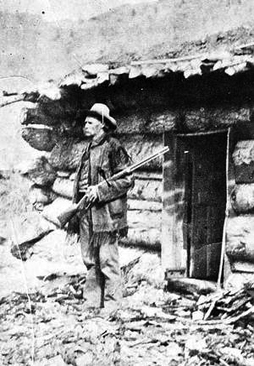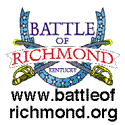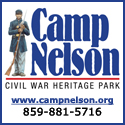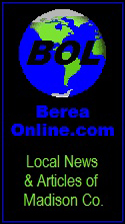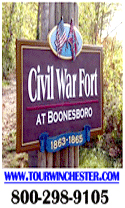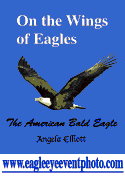|
Chesnut was true to his heritage,
gave the 6th Texas what it needed
Virginia Sen. Jim Webb characterizes the heritage of Southern Appalachia’s Scots-Irish natives as individuals who are independent, distrustful of governments in general and those with a readiness to fight for that which is right and just.
In short, Webb, in his book “Born Fighting,” explains that if you want to go to war, recruit fighting men from Southern Appalachia. They’ll give the opposition hell and will fight to the death.
And that’s the legend of Robert Chesnut.
This native of Clay County was no angel and never claimed to be. Family lore describes him as “a troublesome sort and unusually independent.” He was a crack shot, hunting wild turkeys and squirrels with a long-barreled, muzzle-loading rifle and, as the Civil War neared, he became a passionate defender of the Southern cause.
Chesnut enlisted at age 26 in Company A, 6th Texas Cavalry, on Aug. 10, 1861. He served as a captain for two years, 11 months and 21 days and earned a reputation as an excellent sharpshooter who was tough as nails.
The Sixth Texas Cavalry, known as the Sharp Shooters, served in more than 85 skirmishes, engagements, and battles including Pea Ridge (Ark.), Holly Springs (Miss.) and the Atlanta campaign. They slipped behind Union lines, provided intelligence and disrupted Union supply lines.
The Sixth roamed widely through the Indian territories, border states and the South, often broken into elements supporting operations by CSA Generals Nathan Bedford Forrest and Sterling (Pap) Price. The Sharp Shooters gained fame as a fighting unit, but at the cost of heavy casualties.
Chesnut was discharged in 1864, but remained a proud Confederate for the rest of his days.
After his war ended, Chesnut tried to return to Kentucky, but neither neighbors nor family welcomed him. He drifted west, freighting from Leavenworth, Kan., with ox teams, soon becoming a wagon master.
By 1865, Chesnut arrived in Montana Territory, drifting into the valley that (almost) bears his name, along the east side of the Missouri River near today's town of Cascade. The valley and post office were named for Chesnut, but bureaucracy imposed the name "Chestnut" on both, much to Robert's chagrin. It was recalled that Chesnut complained, "When you put a t in the middle of my name, you make a nut out of it, and By God, I'm no damn nut!"
Chesnut was described as a picturesque character who followed the life of a trapper and hunter.
"He was a fine specimen of physical manhood; tall, erect, well built and weighing about 180 pounds," one individual recalled. "His face was broad, well proportioned, swarthy, with a kindly expression. Hair and mustache were iron gray."
Chesnut left a trail of stories that could extend from Cascade to Great Falls. His Kentucky family received a letter from him postmarked Sun River, Mont., June 16, 1888: "if there is any good looking olde maids or Rich Widows without Children pleas Recomende me to them tell them that I am a Rebel and a drinking Sorte of a Connection and a good fidler & a hell of a fellow generly – and if any of them likes the Recomend tell them to Write me a long letter-giving her name pedigree etc. R. C."
However, no letters came.
Among the memorable stories is that of Orrin G. "Yank" Robie, a neighbor of "Rebel" Chesnut. Robie was found dead in his cabin in 1897 with two bullets to the back of his head. A coroner's jury concluded that his death came "by a shot from a 50-caliber needle gun in the hands of a person unknown."
Despite the verdict, some neighbors believed Chesnut was the murderer, although he never was charged.
Chesnut remained in Chestnut Valley until 1901 when he returned home to Clay County. In spring 1905, he suffered a paralytic stroke and died Oct. 18, 1912.
It generally was concluded that Montana lost a passionate Confederate veteran.
|




